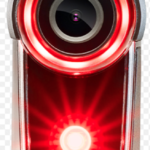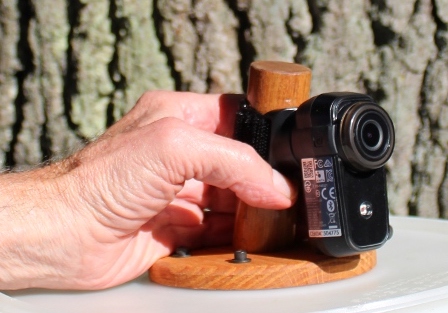
By Sumner Brown
Bicycling is not perfectly safe. Belmont’s approach to handling bicycles on roads is evolving, and some bicycle riders could improve their habits. But there is another problem that I have been thinking about after I spent three weeks in hospitals recovering from a hit-and-run bike incident: bicycle cameras.
While I was confined to Spauldingz Rehabilitation Hospital in Charlestown, I concluded that my mistake was that I did not have a camera on my bicycle that could have recorded what happened and the license plate of my attacker. (Incidentally, you can tell you were attacked during road rage if the vehicle honks-honks-honks for some seconds before hitting you.)
Bicycle cameras come in two varieties: front and rear. The cameras designed to face rearward can be mounted on seat posts and have red taillights built in that can blink or be turned off. The front cameras have a white light for riding after dark, and they easily mount on handlebars. I wanted a rear-facing camera because a rear camera would have had a clear view of the vehicle before the hit. After the hit, the usefulness of a forward-facing camera would have been unknowable.
At first I thought of using a GoPro camera, a forward-facing camera that mounts on a bike helmet or handlebars, but there are other cameras available that have features exactly suited for recording bicycle incidents. In particular, they reuse the camera’s memory until the bicycle falls over. Then the last five minutes and the next five minutes of video are saved and locked. They cannot be overwritten until you delete them.
The camera I have is a Cycliq FLY6 GEN3, model CE603. My camera disappoints me in its ability to record license plates for two reasons. First, the camera’s resolution, 1920 x 1080 at 30 frames per second is spread out over a wide angle, 135 degrees. And second, most car drivers are polite so they give bicycles a wide clearance. When I ride past parked cars with adequate clearance, the camera does better at catching license plates. I hope to not get the ultimate test of recording a license plate when a vehicle hits me from the rear again.
The front-facing cameras from the same company, Cycliq, have image stabilization. This may be better at recording license plates. I will see. The present costs of cameras from Cycliq are $319 for their front facing camera and $239 for their rear facing camera.
Back when I was commuting from Belmont into Cambridge by bicycle in the 1970s through the1990s, drivers were courteous and careful (although there was one incident when a driver somehow did not see me as they turned onto Concord Avenue). I now get most of my exercise running, but my friends who are primarily bicyclists feel that some drivers’ temperaments have gotten unpleasant in the last six years.
If I had had a camera when I got hit, the camera would not have prevented my bleeding brain injury. So will bicycle cameras make you safer? My hope is that bicycle cameras will turn enough hit-and-run incidents into incarceration and financial damage stories so individuals that might be inclined to attack bicycles will reform themselves.
Sumner Brown is a director of the Belmont Citizens Forum.



Sorry, the comment form is closed at this time.